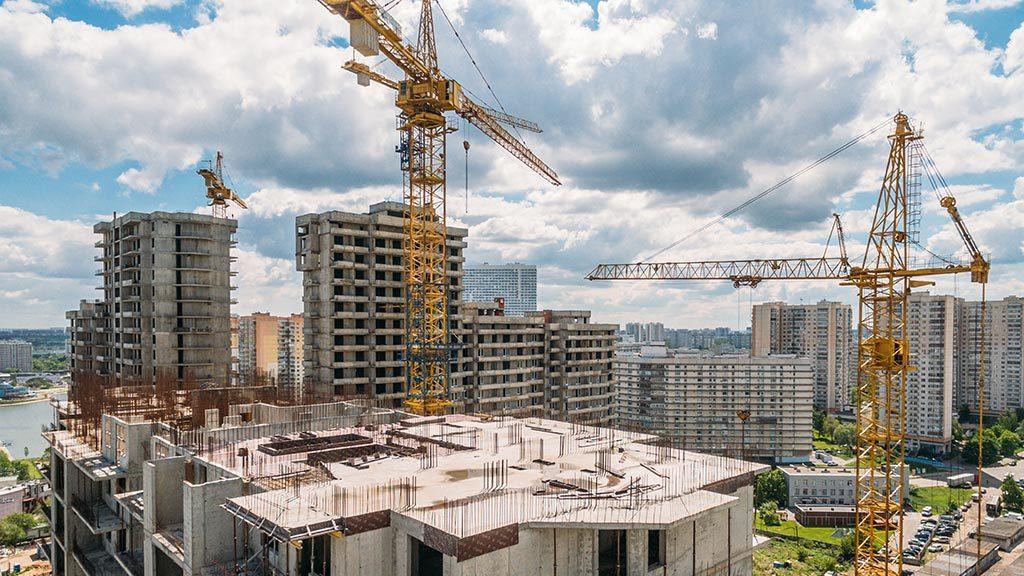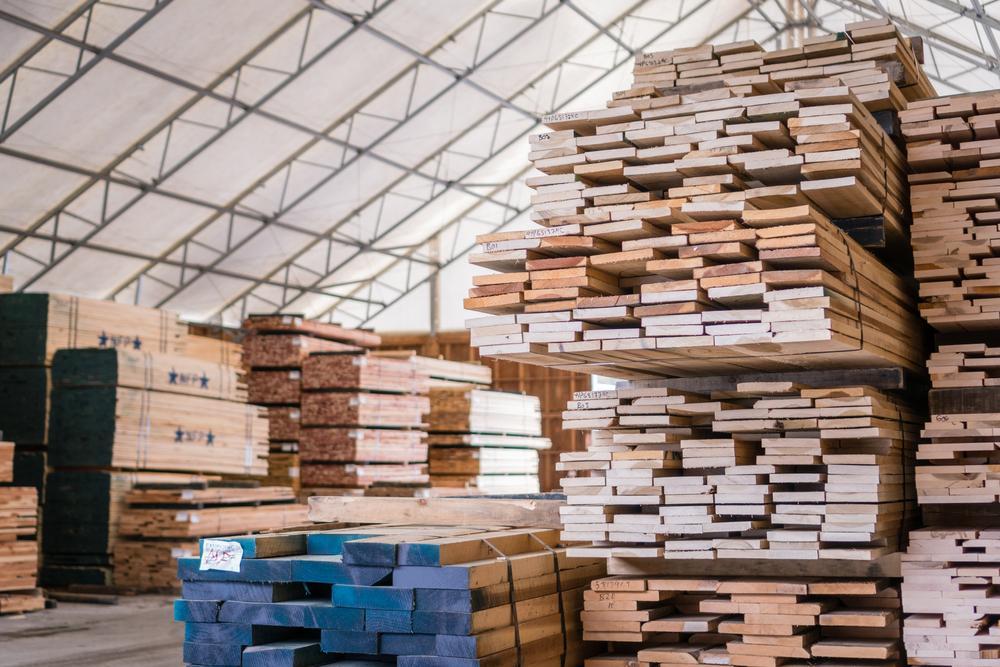Karabakh's revival ensures growth of Azerbaijan's construction sector Analysis by Caliber.Az
For the first time after five years of crisis, Azerbaijan's construction sector is steadily gaining momentum, and according to a report by the Asian Development Bank (ADB), industry investments have increased by more than five per cent. The key driver of the growth of the construction industry was the large-scale construction and restoration work carried out in the Karabakh region, which multiplied the need for building materials. Moreover, despite the growth of global inflation and other negative trends affecting the rise in the cost of imported components and raw materials, the country has noticeably increased the production of building materials and new facilities are being built for their production.
The energy crisis of 2014-2017, which for a long time reduced the effective demand of the population in the real estate market, as well as significantly reduced the scale of investment programs financed from the budget (road, infrastructure, industrial), restrained the pace of housing and capital construction in the country for a long time. The situation began to level out only in 2019, but the 2020 pandemic again collapsed the construction market, which had a very negative impact on the industry providing construction sites with raw materials and materials.
Nevertheless, since the spring of last year, the residential real estate market of Azerbaijan, supported by the growth of mortgage lending, has begun to show signs of revival, and most importantly, large-scale projects have been carried out in the country for about a year and a half to revive the Karabakh and East Zangezur economic regions liberated from occupation. So, if over the past decades the centre of construction activity has been concentrated in Baku, Sumgayit, Ganja and other major cities of the republic, today it has smoothly moved to the western regions of Azerbaijan, pulling investment and technical resources here.
First of all, we are talking about large-scale projects for the restoration of liberated territories, where, in parallel with the demining process, the construction of highways, bridges, tunnels and other road infrastructure with a length of over 700 km is carried out. At the same time, energy and communal infrastructure is being restored on the liberated territories, airports are being built, residential, and administrative buildings, hotels are being built, and the first industrial clusters are being formed in Shusha, Aghdam, Zangilan and Fuzuli. All these large-scale initiatives have provided many dozens of construction, contracting, design, consulting, transport and other contracting structures with work and at the same time stimulate entrepreneurs to increase the production of basic building materials.

Last year, about 2.2 billion manats [$1.29 billion] were allocated for the programs for the revival of the Karabakh region, this year an even larger amount of funds will be allocated from the budget, not counting investments by private companies in the construction of industrial facilities, the sphere of "green" energy and the agricultural sector. The construction sector of Azerbaijan has not received such generous investment flows for a long time, comparable only to the period of the oil and construction boom – the era of the "fat" years (2002-2014). Moreover, taking into account the scale of the rehabilitation program in the Karabakh region and its duration, the high demand for building materials and construction business services will continue for at least another seven-eight years. Accordingly, the concept developed at the end of last year and the forecast indicators of economic and social development of the state budget of Azerbaijan for 2022 and the next three years in the construction sector in 2022-2025 predicted growth from 2.9 per cent to 3.3 per cent.
However, the current realities have surpassed even the most optimistic forecasts: in the July review "Asian Development Outlook-2022" of the Asian Development Bank (ADB), it is noted that the multiply increased investments in the post-war revival of the Karabakh region contributed to the growth of capitalisation of the construction sector of the republic. "Investments in the restoration of the liberated territories stimulated the growth of the construction sector by 5.2 per cent, whereas the previous five years there was a decline in this sector," the ADB review emphasises.
Another precise marker that determines the situation in the country's construction market is the sphere of building materials production, where today there is a dynamic rise after a fairly long period of stagnation. Thus, according to the State Statistics Committee, in January-June of this year, construction materials worth 520.5 million manats [$306.4 million] were produced in the country, which was 33.4 per cent higher than in the corresponding period last year. In particular, cement production in Azerbaijan increased by 1.7 per cent in the first half of the year, construction gypsum was produced by 37.8 per cent more, production of building blocks and bricks increased by 47.8 per cent, finished concrete mix - by 25.3 per cent, construction lime - by 11.4 per cent, and building bricks - by 16.8 per cent. In turn, asphalt production increased by 9.4 per cent.
It is noteworthy that even external negative trends could not slow down the dynamic rise in the construction industry. As a consequence of the global oil and gas crisis and rising electricity prices, there has been a noticeable reduction in production and a rise in the price of building materials around the world. In particular, local producers faced a high level of imported inflation in Europe and Türkiye, which led to a rise in the price of imported raw materials, and in turn, transport and logistics failures resulted in increased costs for the supply of building materials and their components from Ukraine, Russia and Belarus. However, despite these factors, the production of basic building materials in Azerbaijan is increasing, moreover, new industrial enterprises are being put into operation, and additional plants are being designed in the Karabakh region.

So, last Wednesday [July 13], Azerbaijani President Ilham Aliyev took part in the groundbreaking ceremony of a number of industrial enterprises in the Sumgayit Chemical Industrial Park, where plastic and steel pipes, water and gas fittings, metal structures, power cables, chemical reagents and various components for the production of building materials have been produced for many years. Azerbaijan Vanhong Ceramics Co LLC with 100 per cent Chinese capital has also become another resident of the agricultural enterprise specialising in the production of building materials. In the near future, LLC is going to build a plant with an annual capacity of 18.5 million sq/m of ceramic slabs of various sizes in the industrial park on the territory of 22.8 hectares. It is planned to invest 70 million manats [$41.2 million] in this project, and after the launch, the enterprise will provide 400 people with permanent work. In addition to the domestic market, the products will be exported to neighbouring countries.
Recently, another company, Kartash Kimya LLC, has acquired the status of a resident of the SHPP, which also plans to invest 17 million manats in the development of the construction industry. In particular, the LLC will create an enterprise on the territory of three hectares for the production of various construction chemicals, which will also be exported to Turkey and CIS countries.
No less ambitious plans for the development of the construction industry are planned to be implemented in the territories of Azerbaijan liberated from the Armenian occupation. In particular, in the Aghdam Industrial Park, where the first residents will start working in August, the production of ventilation and fire-fighting equipment, and metal products will eventually be established, and the production of concrete and cement pipes for sewerage is also expected. And the Azerbaijani authorities are ready to provide technical and financial assistance to entrepreneurs who will invest in the construction of enterprises for the production of brooms and tiles in Aghdam.
Similar initiatives have been conceived in the Araz Valley Economic Zone located in Jabrayil District, where it is planned to create enterprises for the production of cladding and insulation materials, and metal structures for construction. At the next stage, significant investments are expected in the production of building materials: there are 5 million cubic meters of sand deposits in Jabrayil District, as well as gravel, volcanic ash, sawn stone, clay for the production of bricks, cement raw materials, gypsum, lime, jasper, etc.
Kalbajar, Lachin, Gubadli, and Zangilan districts are no less rich in construction materials. Azerbaijani, Turkish, European and other investors are already assessing the potential of the mineral resources of the Karabakh region and will begin to develop it as these territories are cleared and primary infrastructure is created here. Accordingly, over time, Azerbaijan will not only reduce the need to import building materials but will also be able to turn the construction industry into a powerful export item, a stable source of foreign currency.








